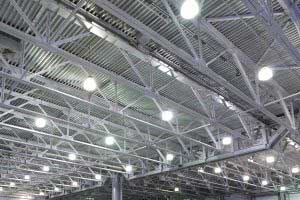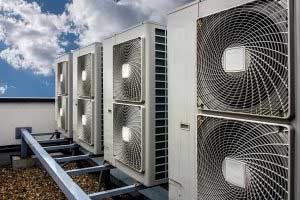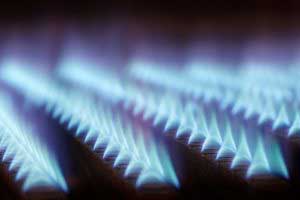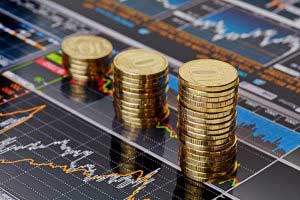Monitoring energy consumption as a tool for energy management
A tool for improving energy efficiency, sustainability, company image and results
Through monitoring energy consumption, energy flows in buildings or installations can be mapped. Unnecessary energy consumption and deviations in patterns of consumption are made visible. What’s more, a complete picture of misaligned systems appears. Consumption monitoring can also be used to compare consumption across multiple locations or buildings. Analyzing data obtained through monitoring and implementing solutions will result in immediate reduction of energy consumption, in turn lowering energy costs and improving operating results. Monitoring of energy consumption also has a positive effect on Corporate Social Responsibility (CSR), CO2 reduction and company (brand) image.
At locations that feature large buildings or complex infrastructure, and at companies with multiple locations, managing energy flow(s) is especially complicated and requires specialist knowledge and equipment. Professional energy meters, the right software, configuration and system integration are all essential to generating the desired data output. The first step is a correct inventory.
Monitoring energy consumption contributes to
Consumption monitoring in relation to CSR and brand image
Companies have a moral obligation to treat natural energy sources with the utmost care; CSR is essential. Monitoring energy consumption enhances your sustainable brand image with your employees, relations and suppliers. Through consumption monitoring, energy consumption insight is provided so that improvements to reduce energy consumption and associated CO2 output can be implemented. In addition, continuous insight into energy flows is a necessity for many companies, due to stricter government requirements and the mandatory EED (Energy Efficiency Audit) for larger companies.
- Lighting/electrical devices
- Climate control
- Natural gas heating systems
- Energy saving investments
- Optimization of solar power system

Electricity consumption should be considerably lower outside opening hours or (intensive) usage times. However, lighting and/or electrical devices are often left ‘on’ or in ‘standby’ mode after working hours. Consumption monitoring provides a clear insight into this. By analyzing consumption data, actions to reduce unnecessary energy use can be developed and implemented.

To prevent unnecessary energy consumption, it is important that ventilation, air treatment and heating are properly aligned. It is, of course, not desirable activate air conditioning while the heating is on. In many buildings, climate control has been adapted over time in line with users’ wishes. Regulations may no longer be aligned with the actual use of a building – consumption monitoring provides clear insights into this.

In many cases, gas consumption can be easily reduced, providing it is clear at what times the heating is on in different sections of a building, and how this has been adjusted. A conscious and controlled use of heating results in considerable energy savings.

Consumption monitoring not only provides insights into energy consumption, but also provides tools for calculating energy savings. If the annual consumption of an installation is known, the energy costs can also be easily calculated. Subsequently, sustainable and energy-efficient solutions can be implemented. Energy monitoring also forms the basis for future investments in energy saving measures.

Consumption monitoring offers the possibility to permanently monitor solar power systems. It provides insight into the proper functioning of available panels (efficiency), how much energy is induced and how much energy is actually used in the electrical installation. If it turns out that more energy is being generated than used, energy storage could be an option for optimizing the efficiency of your solar power system.
Quality monitoring: insight into Power Quality
Do you want to take the next step? This is possible for monitoring energy consumption, but also for the quality of this energy. Quality monitoring offers tools for improving the quality of electricity (Power Quality) allowing the optimal efficiency, continuity and safety of the electrical installation to be achieved. This reduces unnecessary energy losses and reduces malfunctions and problems in your installation.
Monitoring as a tool for visualizing temperature (HACCP) and fluid levels
Monitoring allows for more than mapping energy consumption and Power Quality. Thanks to a large diversity of meters and equipment, the monitoring system can be adapted to everyone’s wishes and requirements. Additional data that can be made visible are: temperature (HACCP), CO2 emissions, liquid levels and harmful substances. We are happy to inform you about the possibilities.
Ensuring security and continuity for a data center managed by Zentrys
Ensuring security and continuity for a data center managed by Zentrys Zentrys designs, develops and…
Nyrstar enjoys continuous insight into the quality of its electricity
Insight into the quality of electricity EMT720T meters register all Power Quality circumstances A year…
Solving Power Quality issues and implementing continuous optimisation with MFED at Mannesmann
Solving Power Quality issues and implementing continuous optimisation with MFED at Mannesmann Mannesmann Precision Tubes…
Paragon chooses HyTEPS as their partner for products and services
Paragon chooses HyTEPS as their partner for products and services Improving the quality of electricity…



